Over 100 million people rely on inshore subsistence and small-scale artisanal fishing for their daily food and livelihood. But it’s not them that we’ll talk about in this post – because they are the unfortunate ones at the end of the short stick in the global game of industrial subsides.
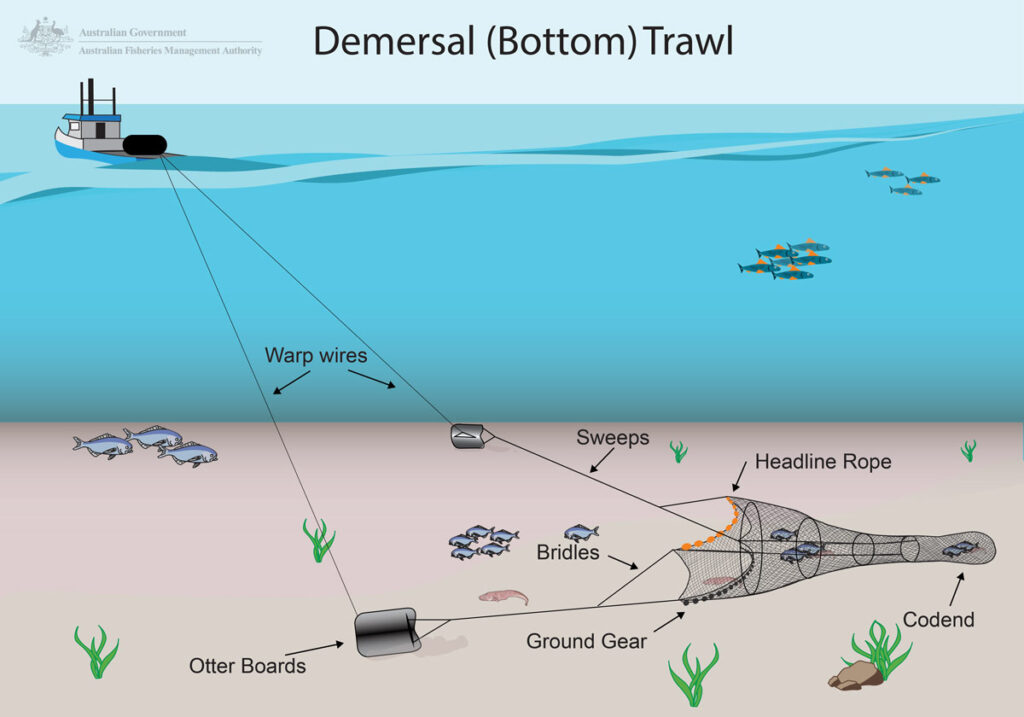
Industrialised Fishing is … a real Challenge
It is old news that the global fish stocks are approaching a point of no-return collapse at an alarmingly fast speed. In many geographies that is virtually happening as we speak.
According to data from the UN Food and Agriculture Organization, fish stocks are at risk of collapsing in many parts of the world due to overexploitation. It is estimated that 34% of global stocks are overfished compared with 10% in 1974, meaning they are being exploited at a pace where the fish population cannot replenish itself. (Source)
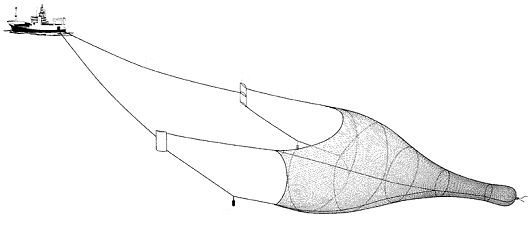
And yet:
One of the most popular industrial-scale methods for catching fish is also one of the most destructive. Bottom trawlers, vessels that drag weighted nets over the seabed to scrape up seafood, land around 19 million tons of seafood annually. This is almost a quarter of global marine landings and is an amount larger than any other fishing method. In some parts of the world over half of all seafood landed is caught in this way.
Over the past 65 years alone, bottom trawlers have discarded overboard more than 400 million tonnes of untargeted marine life. This includes everything from protected species and marine megafauna to commercially valuable fish also targeted by small-scale fishers. Had this catch been landed, it would have been worth around US$560 billion. (Source)
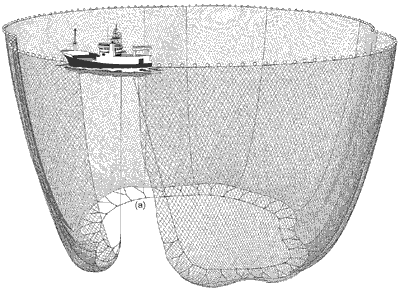
Paradoxically, a 2010 scientific article found that subsidies to bottom trawlers stood at about US$152 million per year, which constituted 25% of the total landed value of the fleet. Economic data for bottom trawlers suggested that the profit achieved by this vessel group was normally not more than 10% of landed value. The implication of this finding was that without subsidies, the bulk of the world’s bottom trawl fleet operating in the high seas would have been operating at a loss.
That subsidies and access rights to waters in order to fish at industrial scale has once more come into focus at the occasion of Brexit and the ongoing quarrels between the EU and the UK precisely centred around their respective fishing industries.
Global Status Quo on Fishing and Subsidies
Looking further into the challenge posed by subsidies into the industrial fisheries industries a further 2019 scientific article revealed the following:
- Available empirical studies are clear—subsidies that artificially increase profits by reducing the cost of fishing and/or increasing the revenue received by fishers result in overcapacity and lead to overfishing.
- The global fisheries subsidies are estimated at USD 35.4 billion in 2018, of which capacity-enhancing subsidies – including those for fossil fuels – are USD 22.2 billion.
- The top five subsidising political entities (China, European Union, USA, Republic of Korea and Japan) contribute 58% (USD 20.5 billion) of the total estimated subsidy.
- Global fishery subsidies seem to plateau, or possibly even slightly decline, as a global total.
The International Institute for Sustainable Development outlines 25 reasons why fishery subsidies should be stopped globally.
WTO and fishery subsidies
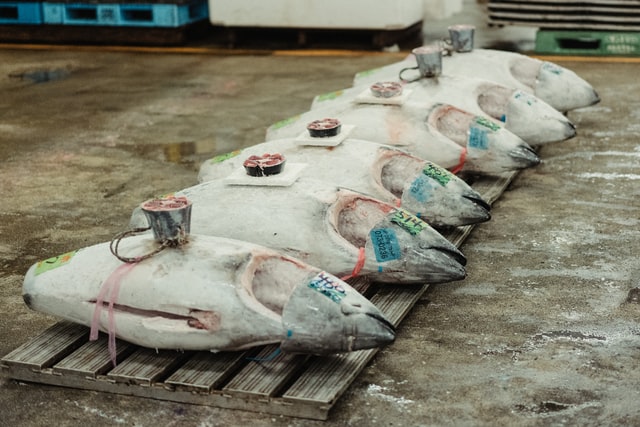
WTO negotiations on fisheries subsidies were launched in 2001 at the Doha Ministerial Conference, with a mandate to “clarify and improve” existing WTO disciplines on fisheries subsidies. That mandate was elaborated in 2005 at the Hong Kong Ministerial Conference, including with a call for prohibiting certain forms of fisheries subsidies that contribute to overcapacity and overfishing.
At the 2017 Buenos Aires Ministerial Conference (MC11), ministers decided on a work programme to conclude the negotiations by aiming to adopt, at the next Ministerial Conference, an agreement on fisheries subsidies which delivers on Sustainable Development Goal 14.6. (Source)
WTO members committed to reaching an agreement to end harmful subsidies by 2020 under SDG 14 Target 6. However, as at writing, no such agreement has been achieved, and the WTO negotiations are ongoing. For details on the state of play, the WTO as published a summary as per December 2021. The current draft agreement can be found here. This statement by India makes it clear that there is still a long way to go before their may be a consensus agreement. The 2017 report by UNCTAD and CUTS International sheds some light on the challenges of Least Developed Countries in the context given.
It’s Scary Prospects
Once you read through the above resources by the WTO, but also dig into how each and every country is recklessly following a loose-loose strategy, hence desperately trying to maintain its own status quo while asking everyone else to ‘go first’ and make away with subsidies – depression is not very far.
Hope remains that that maybe the stubborn country representative will realise how bad the current situation is. That indeed they listen to the call (through this open letter) by 300 global scientists.
At the same time – when have WTO negotiations ever created genuine progress? When have they have ever had to benchmark themselves against measurable scientific goals of the global kind?
Hope prevails. But cynicism certainly is not very far.
Looking elsewhere – Creates Hope
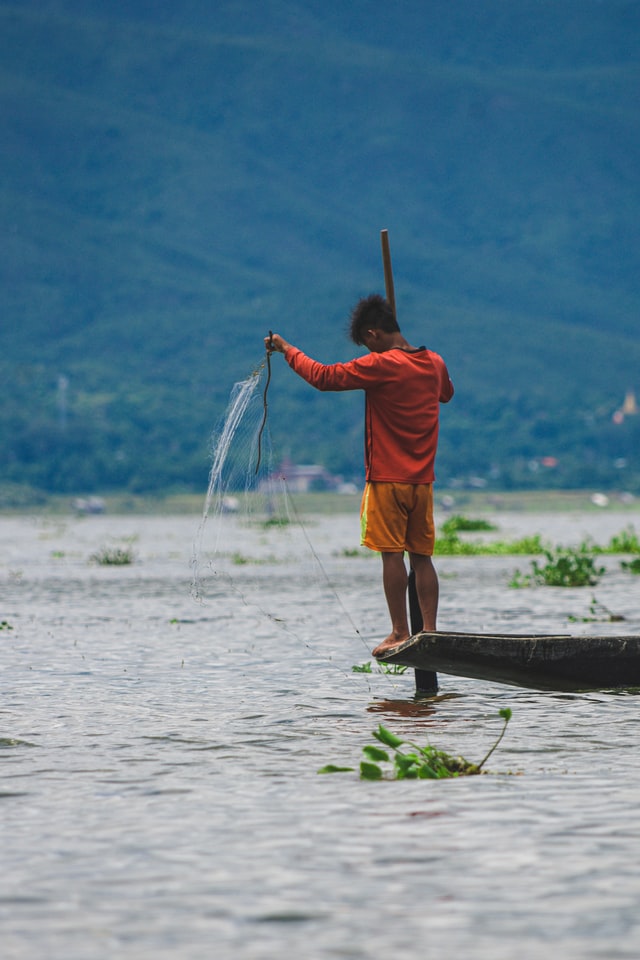
Hope there is though. It just does not come from governments.
Instead it is private science-based, tested and trialled initiatives that turn out to be scalable – and base themselves on those market mechanisms that work at the grassroots levels. Plus a bit of support through financial seed investments of impact investors.
One such imitative is Blue Ventures. Their approach assists seashore communities to restore wild seafood populations, create healthy ocean environments and improve their own livelihoods of traditional fishers.
They started back in 2003 to figure out how individual seashore communities could use conservation approach to do impossible: protect large areas of ocean coastal regions while improving fish stocks, ocean biodiversity – and last but not least their own livelihoods.
The result? As of end of 2021 they reached 754,000 small-scale fishers across 14 countries and achieved that 21,089 km2 of ocean was protected by coastal communities themselves. (Source)
Their bottom up approach is so successful that since a small handful of years they’ve taken to scaling it.
Yes there is hope indeed. Just not from where you’d be expecting or wanting it to come from.

